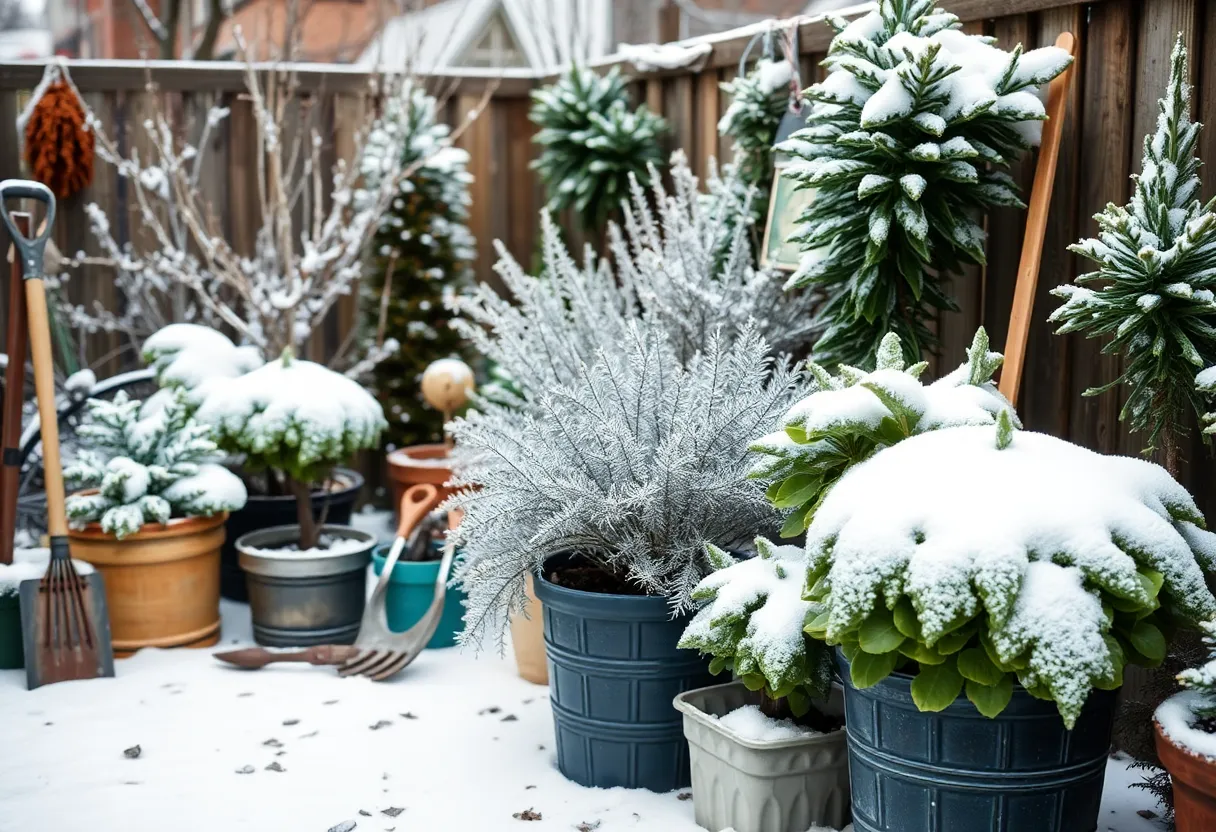10 Winter Gardening Tips to Keep Your New York Garden Thriving
Winter presents unique challenges for gardeners in New York, where cold temperatures, frost, and limited daylight can threaten plant health and productivity. To maintain a vibrant and healthy garden throughout the season, strategic planning and specific practices are essential. Below are ten scientifically grounded tips designed to protect, support, and prepare your garden for winter’s harsh conditions, ensuring it remains resilient and ready for spring growth.
1. Select Resilient, Winter-Hardy Plants
The foundation of winter gardening success lies in choosing plants that naturally withstand low temperatures and frost. Opt for species with proven cold tolerance, such as cold-hardy perennials, evergreen shrubs, and certain vegetables like kale, Brussels sprouts, and winter radishes. These plants have adaptations—like thicker cell walls and antifreeze proteins—that enable them to survive freezing temperatures. Strategic selection reduces the need for extensive protection measures and guarantees consistent color and productivity during winter months.
2. Utilize Protective Structures
Row Covers, Cloches, and Mini Greenhouses
Implementing physical barriers is essential to shield sensitive plants from frost and wind damage. Light but insulating row covers or cloches create a microclimate that retains heat and minimizes cold stress. Constructing mini greenhouses around vulnerable plants offers even greater protection, trapping warmth and humidity. These structures prevent frost penetration, maintain more stable temperature ranges, and extend the growing season or overwintering capacity of certain crops.
Strategic Placement and Material Choice
Position the covers during the coldest parts of the day, removing them during milder conditions to prevent overheating. Use materials like spunbond fabric or polyethylene sheeting—both durable and suitable for winter use—to maximize insulation while ensuring adequate airflow and light transmission.
3. Apply Organic Mulch for Soil and Root Protection
Applying a layer of mulch significantly benefits winter garden health. Organic mulches such as straw, shredded leaves, or wood chips insulate the soil, reducing temperature fluctuations and preventing root heaving caused by freeze-thaw cycles. A 2-3 inch layer suffices to protect perennials and shallow-rooted vegetables. Mulching also conserves moisture, suppresses weeds, and enriches the soil as it decomposes, promoting nutrient retention for the following season.
4. Implement Raised Beds and Container Gardening
Advantages of Raised and Container Systems
Raised beds provide better drainage and more efficient thermal regulation than in-ground plots. Elevated beds warm faster in the sun and are less susceptible to frost infiltration. Using containers allows for flexible placement—such as near heated structures—and facilitates soil manipulation for optimal conditions. Both methods enable precise control over soil composition and microclimate, ensuring plants receive adequate warmth and protection throughout winter.
Practical Considerations
Ensure containers are positioned to maximize sun exposure and are raised off the ground to prevent frost contact. Use well-draining soil mixes with organic matter to promote healthy root development despite colder temperatures.
5. Adjust Watering Practices Carefully
Overwatering during winter can be as harmful as drought. Cooler temperatures slow plant transpiration and root activity, increasing susceptibility to root rot if excess moisture remains. Water during the warmest part of the day, and only when the soil is dry to a depth of several inches. Drip irrigation systems or soaker hoses help deliver moisture efficiently without surface runoff or excess hydration, reducing water waste and disease risk.
6. Amend Soil for Spring Readiness
Fall is ideal for enriching soil with organic amendments such as compost or aged manure. These additions enhance microbial activity, improve soil structure, and increase nutrient content—benefits that persist through winter and support vigorous growth when warmer weather arrives. Incorporating these materials before ground freeze-up ensures nutrients are available early for root development and seed starting in spring.
7. Protect and Elevate Potted Plants
Potted plants are particularly vulnerable to cold damage because their roots are exposed and less insulated than those in the ground. Elevate pots on plant feet, bricks, or risers to facilitate drainage and prevent water accumulation at the base, which can freeze and damage roots. Insulating containers with straw, bubble wrap, or specialized pots helps regulate temperature, and moving vulnerable potted plants into sheltered locations during severe cold spells provides an additional layer of security.
8. Construct and Use Cold Frames as Mini Greenhouses
Building a cold frame involves creating a low, insulated box topped with a transparent cover—usually glass or plastic—that captures sunlight and provides a protected environment. These structures allow for early seed sowing, overwintering of cold-tolerant vegetables, and protection of perennials. Proper ventilation, drainage, and insulation improve efficacy. Cold frames extend the growing season, improve crop yields, and offer a controlled environment for various plants even during the coldest months.
9. Regularly Monitor for Pests and Diseases
Winter does not eradicate pests; many insect species enter dormancy or persist in protected niches. Regular inspection is vital to identify anomalies early. Look for signs of pests such as aphids, overwintering beetles, or fungal infections. Maintaining garden cleanliness—removing plant debris, fallen leaves, and diseased material—reduces habitats for pests and limits disease spread. Thoughtful intervention with organic-approved controls, when necessary, helps sustain plant health during dormancy.
10. Plan and Prepare for the Next Growing Season
Winter is an optimal time for strategic planning. Review past performance, identify successful species, and note areas needing improvement. Conduct research on new plant varieties suited for winter or early spring planting. Order seeds and supplies in advance to ensure availability. Creating detailed garden layouts and planting schedules ensures efficient resource use and maximizes productivity once the growing season resumes. Proper planning minimizes surprises and supports continuous garden health through all seasons.
Additional Considerations for a Successful Winter Garden
Soil Testing and pH Adjustments
Test soil periodically to determine pH and nutrient levels. Adjustments—such as lime application for acidic soils or sulfur for alkaline soils—improve nutrient availability and plant resilience to cold stress. Healthy, balanced soil promotes robust root systems, which are crucial during winter dormancy.
Seasonal Pruning and Cleanup
Removing dead or diseased foliage prevents overwintering pests and pathogens. Proper pruning encourages strong growth and air circulation for perennials and woody plants, reducing winter injury risk. Keep pathways clean to prevent accidents and facilitate access for inspections and maintenance.
Weather Forecast Monitoring and Emergency Preparedness
Stay informed about upcoming cold snaps or storms. Prepare by covering vulnerable plants earlier or shifting container placements. Having emergency supplies like burlap or frost blankets ensures rapid response to sudden temperature drops, protecting your investment and maintaining garden integrity.
Implementing these targeted, evidence-based strategies will significantly improve the resilience of your New York garden through winter. Consistent application of protective measures, soil management, and strategic planning not only safeguard plant health but also establish a foundation for a productive and thriving garden upon arrival of spring.
Author: STAFF HERE NEW YORK WRITER
The NEW YORK STAFF WRITER represents the experienced team at HERENewYork.com, your go-to source for actionable local news and information in New York, the five boroughs, and beyond. Specializing in "news you can use," we cover essential topics like product reviews for personal and business needs, local business directories, politics, real estate trends, neighborhood insights, and state news affecting the area—with deep expertise drawn from years of dedicated reporting and strong community input, including local press releases and business updates. We deliver top reporting on high-value events such as New York Fashion Week, Macy's Thanksgiving Day Parade, and Tribeca Film Festival. Our coverage extends to key organizations like the Greater New York Chamber of Commerce and United Way of New York, plus leading businesses in finance and media that power the local economy such as JPMorgan Chase, Goldman Sachs, and Bloomberg. As part of the broader HERE network, including HEREBuffalo.com, we provide comprehensive, credible insights into New York's dynamic landscape.





